Tilly Hill's World War I scrapbook
Transcription
Transcription history
-
Left side:
Newspaper clipping:
THE LAST SCENES AT ENGLEMERE.
Photograph of people walking behind the flag-draped casket
Lady Aileen Mary Roberts, who succeeds to the title, followed behind the gun carriage. Then came Lady Ada Edwina, with her husband, Major Lewis
Newspaper clipping of a photograph of the gun carriage carrying the casket with people walking behind
The arrival of the coffin at Ascot station.
Right side:
Top left newspaper clipping of a man's head with short dark hair and a dark mustache
A new portrait of King Albert of the
Belgians, who is to attend to-day the
Red Cross concert arranged by
Countess Curson of Kedlenton at the
Albert Hall.
Top center newspaper clipping of a man in a plumed hat and military uniform with a mustache
MAJOR GENERAL LANCELOTE
KIGGELL,
Whom the King has promoted for distinguished
conduct in the field, is probably
the youngest General in the army, and comes
of a family of soldiers. He is the only son
of the late Major Kiggell, Cahara, Glin.
The General's second son, who is a Lieutenant
in the Royal Engineers, has had a
narrow escape, his horse having been shot
from under him in a recent engagement at
the front. Lieutenant King-King, a
nephew, is in the South Irish Horse. Lieut.-
Col. King-King, who is a brother-in-law
of General Giggell's, is on the Staff at Dublin.
His other brother-in-law, Captain W.
H. Harkness, of Cahara, served with distinction
in the last Boer War. General
Kiggell's friends and neighbours in Glin
congratulate him on his latest honours,
Medal (gold) to Field Marshal Sir Douglas Haig
and Major General SIr Lancelot Edward Kiggell,
K. C. B. The above got the Order of Damilo
(first class).
Top right newspaper clipping:
REPORTED SINKING OF H.M.S.
AUDACIOUS.
------
CREW RESCUED BY OLYMPIC.
-----
New York, November 15.
The Associated Press states that advices
by mail report that the battleship Audacious
was sunk by a torpedo or mine on
October 27th, off the Irish coast and that
the Olympic saved her crew and attempted
to tow her ashore but failed.
------
(Received at 6:30 p.m. yesterday).
London, November 15.
The Admiralty has not made any statement
regarding the reported loss of the
battleship Audacious.
New York, November 15.
The following details have been given
out by the Associated Press. The Olympic
was ten miles away when the Audacious
signalled distress, and on her reaching she
found the cruiser Liverpool and smaller
vessels standing by in a heavy and
dangerous sea, making the launching of
small boats perilous. Captain Haddock,
calling for volunteers, a double number
stepped forward eagerly, and the best having
been picked the boats were put over in
brilliant style. The discipline on board the
battleship was fine, every man standing
at quarters until his turn came to enter the
boats, and before noon the Olympic's boats
had taken off all except 100 of the crew,
and these remained on board the battleship
while Captain Haddock essayed
to tow her to the Irish coast, 25 miles
away, the Liverpool and the other
rescue ships standing by. It was
difficult work getting a cable on board the
Audacious and by the time this was
performed she was well down by the stern,
and when the Olympic started to drag
on the cable it parted as the strain was too
great. The bulkheads of the Audacious
then began to give way under the strain,
and the task of saving her becoming hopeless
the rest of the crew were taken off and
she was abandoned. She soon began to
settle lower as one after the other of the
bulkheads yielded to the increasing pressure
and at 9 p.m., as the Dreadnought was
rolling in the heavy sea, a violent explosion
shattered her stern, she stood almost
straight with bows pointing up, and then
in a moment disappeared. It is supposed
that a shell, rolling loose as she listed and
foundered, detonated, causing her magazine
to blow up. Great splinters of steel
and other wreckage were tossed high in
the air over a large area and a splinter
which fell on board the Liverpool
caused the only casualty, that of a gunner,
whose legs were severed, causing his death.
The sinking of the Audacious by the
stern favours the theory of a submarine
rather than a mine. Her crew stood like
ninepins while the waves were washing
over the feet of those nearest
the stern, there was no hurry
and no excitement, the quiet orders being
instantly obeyed. A Swedish trawler passed
the cable from the Audacious to the
Olympic, but it parted under a strain
of 30,000 tons at one end and
45,000 at the other heaving uncontrollably
in the heavy sea. The trawler
tried to pass the anchor chains of the
Audacious, which were the world's longest
and strongest, but they were too heavy
for her to handle and this was the last
hope.
The Audacious was one of the four most
powerful of our super-Dreadnoughts belonging
to the King George V. class, completed
last year. She was 596 feet long,
with a beam of 80 ft. and a maximum displacement
of 23,000. Turbine engines of 27,000 h.p.
developed a speed of 21 1/2 knots. The armament
consisted of ten 13.5in. six 4in . and four 3
pownder guns with three submerged torpedo
tubes. All the big guns, which were mounted
in pairs in turrets on the centre line, could fire
on either broadside. Protection was afforded
by a twelve inch armour belt amidships, which
Center left newspaper clipping of a photograph of a man's head wearing a military cap and dark mustache
APPOINTMENT - Lt-
Gen. Sir L. K. Kiggell,
K.C.B., K.C.M.G. to
command troops in
Germany and Alderney.
Center left newspaper clipping
General Sir Lancelot E. Kiggel, K.C.B.
who has just retired under the age limit,
from the Governorship of Germany, is a
Limerick man who has seen mosh service
and greatly distinguished himself. Most of
his life was passed in the Warwickshire
Regiment. In the Boer War of 1900 he was
a General Staff Officer, first grade, and he
then became Director of Staff D[ ] at
Headquarters. Major Harkness, late 6th
Dragoon Guards, formerly a well-known
member of the Dawson street Club (then
called the Four C's, but more unpolitical), is
married to a sister of General Higgel.
Center middle newspaper clipping
Major-General L. Kiggell, now Assistant
to the Chief of the Imperial General
Staff, will become Chief of the General
Staff to Sir Douglas Haig.
------
THE NEW CHIEF OF STAFF
Our new Chief of Staff, Brigadier-General
Launcelot Edward Kiggell, C.B., who was
Assistant to Sir Charles Murray at the War
Office, is a native of the County Limerick.
The son of Launcelot John Kiggell, J.P., of
Cahara, Glin, he was born in October 1862.
He passed from Sandhurst into the royal
Warwickshire Regiment in 1882, and became
Adjutant of the second battalion four years
later. In 1823-4 he passed the Staff College,
and in 1885 was appointed Instructor of the
Royal Military College. Between 1897 and
1899 he acted as Deputy Assistant Adjutant-
General of the South-Kastern District, and in
the latter year he went to South Africa, where
he remained until peace was declared. He
was mentioned in despatches, received the
breved of Lieutenant-Colonel and the Queen's
and King's medals, with eight clasps. On his
return to England he was appointed Professor
of Military Art at the Staff College, and he
subsequently became General Staff Officer,
Army Headquarters, and in 1909 Brigadier-
General in charge of administration, Scottish
Command.
Lower left newspaper clipping:
[ ] painting above and at the [ ]
complement was 900 officers and men, and she
cost more than 1,900,000 to build and equip
-----
SOME FURTHER PARTICULARS
22-11-14
The Central News correspondent at Copenhagen
states that the Commandant of the
force at Trendhjem, Norway, has been removed
because the German converted cruiser
Berlin passed there undetected. It is reported
that the Berlin convoyed the submarine
which, it is alleged, sank the battleship Audacious
and that it was not a mine the latter
struck as at first reported. It is declared
that both the explosions on the Audacious
were caused by torpedoes.
Bottom center newspaper clipping:
SIR LAUNCELOT KIGGELL
The Court Circular announces that Lieutenant-
General Sir Launcelot Kiggell, Lieutenant-
Governor of Guernsey, and Lady Kiggell
were received by Their Majesties yesterday.
Description
Save description- 51.40809321590127||-0.6885532931152056||
Englemere
- 52.57259130000001||-9.374874500000032||||1
Tarbert, Co, Kerry
Location(s)
Story location Tarbert, Co, Kerry
Document location Englemere
- ID
- 4450 / 52140
- Contributor
- Mary Lavery Carrig
October 27, 1914 – November 22, 1914
Login to edit the languages
- English
Login to edit the fronts
- Naval Warfare
Login to add keywords
- Women
dev.transcribathon.comKriegstagebuch Rudolf Kämmerer, SM Hilfskreuzer "Berlin"
de.wikipedia.orgHilfskreuzer Berlin
en.wikipedia.orgSS Berlin
en.wikipedia.orgHMS Audacious
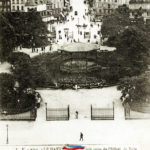



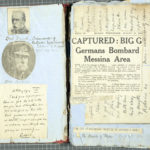


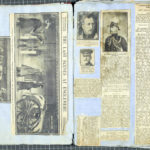

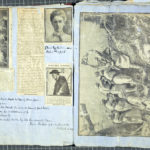
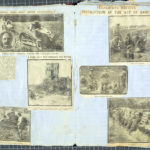







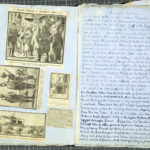




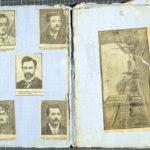


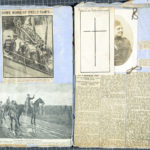


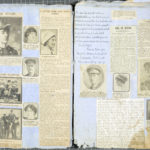









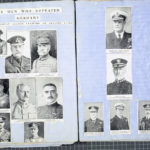
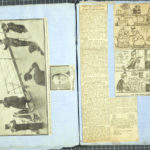




Login to leave a note